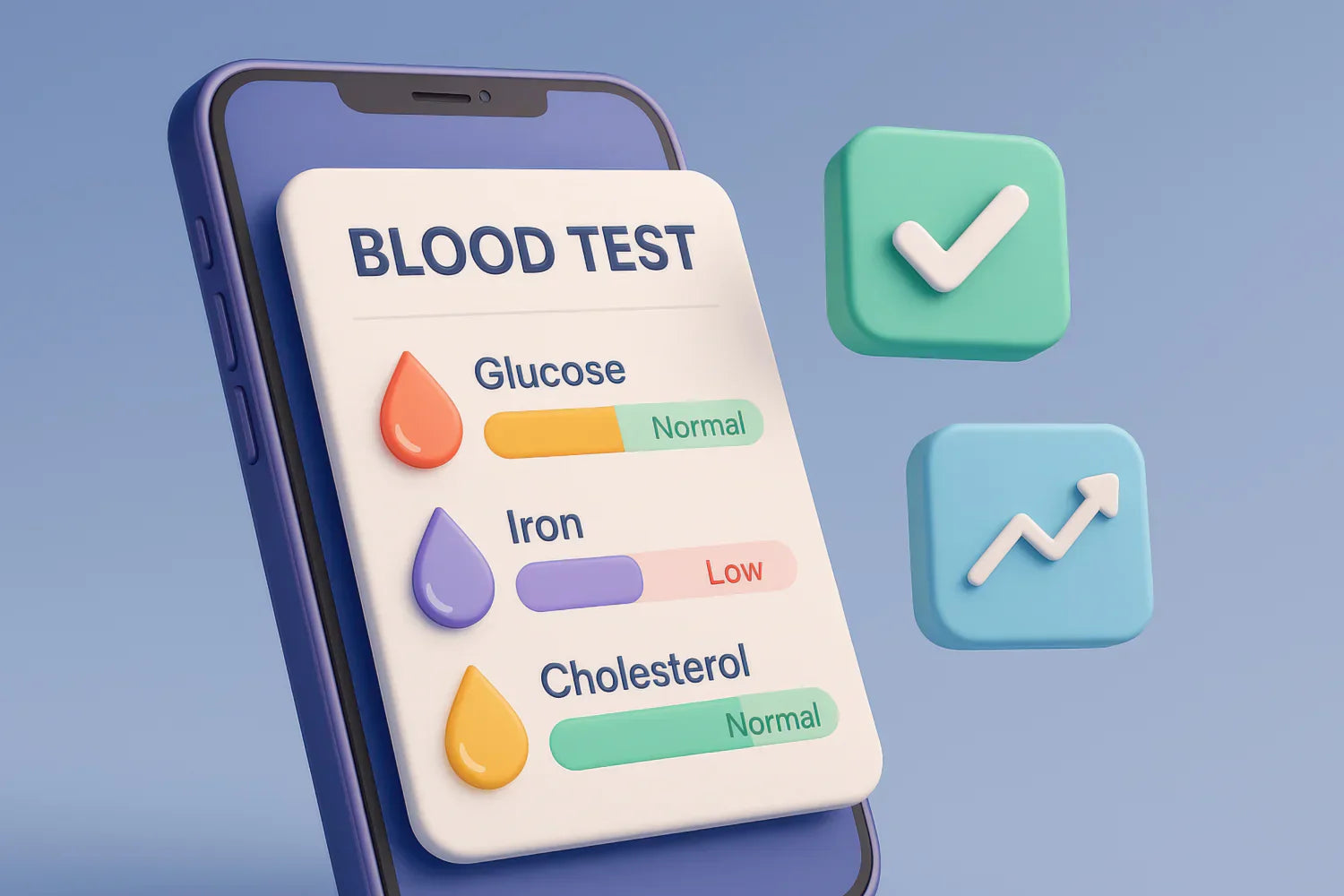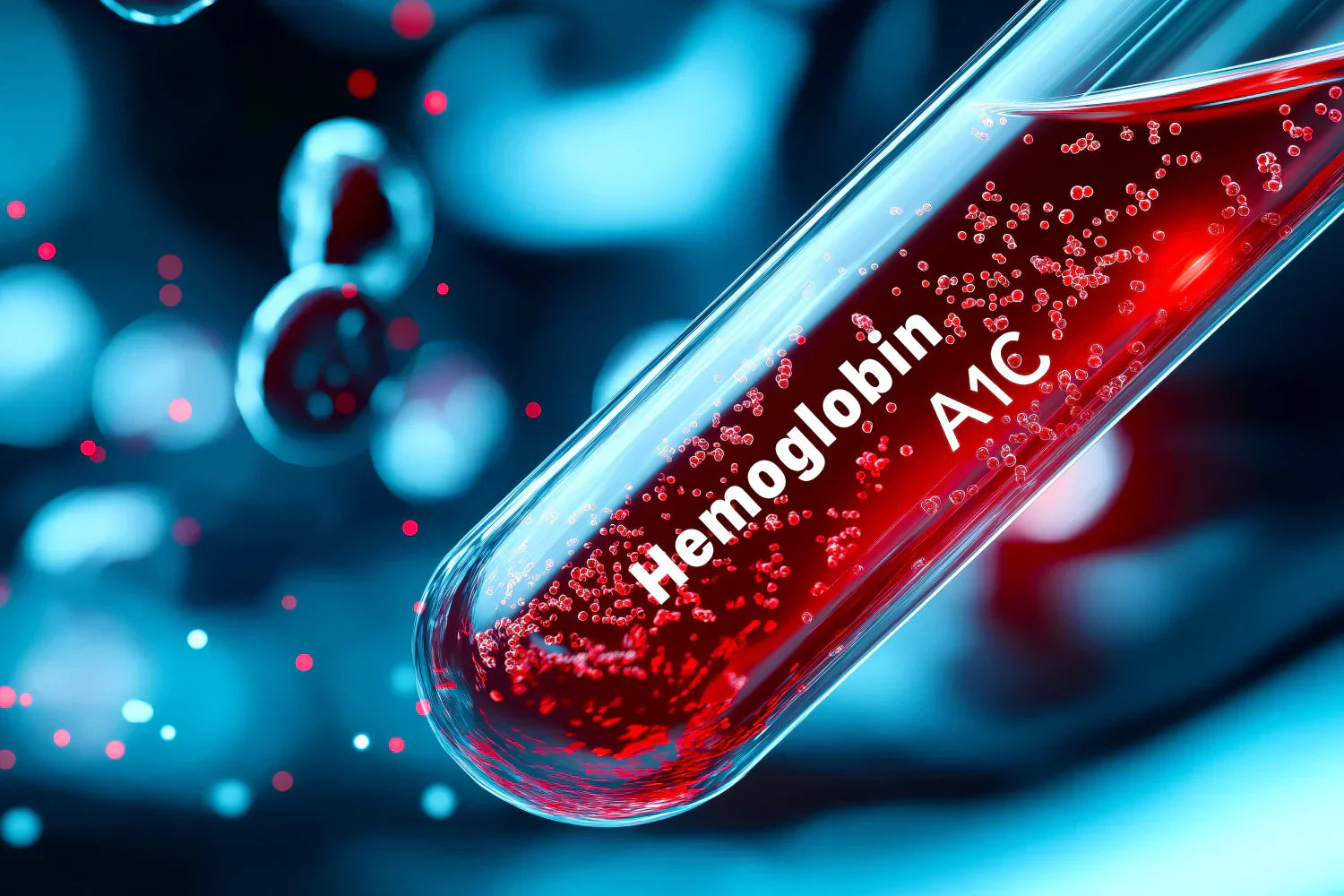What Are Normal Blood Glucose Levels in Adults?
Published by Dr. Venn-Watson

Dr. Eric Venn-Watson’s Highlights
- Blood glucose refers to the amount of glucose in a person’s blood that is available for energy usage. For blood glucose to work effectively, it needs to be balanced. Balancing blood glucose can be more difficult as we age. Taking a supplement, like fatty15, can help support a healthy glucose response and overall metabolic health.
When you have your blood glucose tested, you are actually providing your doctor with a measure of how much glucose is available in your bloodstream. Glucose gets a bad rap, but it’s a vitally important molecule that our bodies use for various functions. Just like cholesterol, it needs to be balanced.
The ideal level of blood sugar can vary. Understanding the healthy range can help you know how to implement dietary and lifestyle changes to help regulate your levels. Taking fatty15 is also a powerful tool to help manage not only your glucose levels, but also your long-term health and wellness.
What Is Blood Glucose?
Simply put, blood glucose refers to the amount of sugar in your blood (blood sugar). When you eat a carbohydrate, your body breaks the carbohydrate down into a usable packet of energy called glucose.
The pancreas is signaled to produce insulin, which moves into the bloodstream to bind to glucose and take it to the cells that need it. Once insulin delivers the glucose to the cells, the cells must “take up” the glucose and use it for energy and cellular processes.
Excess glucose in the bloodstream is converted to glycogen and stored in the liver, muscles, and adipose tissue. If your blood sugar level drops too low, that stored glycogen can be converted back to glucose and taken to the cells that need it.
What Does the Body Do With Glucose?
Glucose is involved in many bodily processes. Although we typically hear about ways to lower glucose levels, the fact that glucose is necessary for our bodies is paramount.
Glucose is involved in:
- Cellular energy and function
- Hormone regulation
- Brain function
Glucose is the primary fuel your body uses for all processes, so it’s important to have it. However, it is possible to have too much of it.
Normal Blood Glucose Levels
Each year that you have a physical, your doctor likely gives you an order for a blood panel to be drawn. Part of this panel may be a blood glucose test.
Most of the time, your doctor will ask you to fast prior to your blood draw. It is necessary to fast before you have your blood drawn to get an accurate baseline of your circulating blood sugar levels. If you were to eat an orange, for instance, before having your blood drawn, the level of glucose in your blood would be higher because you consumed a carbohydrate.
Blood glucose tests are different from an A1C test, or HbA1c test. The A1C test measures your average blood sugar levels over the past three months. Your doctor may order both tests because one gives a broader view of your blood sugar levels, and one tells your doctor how your blood sugar is being managed at a specific time.
Normal blood glucose levels have a wide range in adults, especially after age 65.
|
Age |
Fasting |
After meals |
|
20-49 |
<140 mg/dL |
|
|
50-60 |
70-99 mg/dL |
99-140 mg/dL |
|
70+ |
70-180 mg/dL |
<140 mg/dL |
These ranges may vary depending on your meals and how long you have fasted. If you have diabetes, these measures may help you regulate your blood sugar levels through daily testing and logging of your numbers.
Why Blood Sugar is Important
Your blood sugar levels matter because your health suffers when your blood sugar levels are too low or too high. When your levels are too low, you become hypoglycemic. When your levels are too high, you are at risk of developing type 2 diabetes.
As we age, it is more likely that our blood sugar levels will rise rather than fall. Higher-than-normal blood sugar levels can indicate prediabetes or diabetes. Unmanaged diabetes can lead to heart disease, nerve damage, and even blindness.
Supporting Healthy Blood Glucose Levels
A blood glucose screening that comes back above normal means you’ll need to take action to lower your blood glucose levels and keep them balanced. Your doctor may recommend medication. In addition, you can make a few lifestyle changes.
Eat a Balanced Diet
A balanced diet with whole grains, fruit, vegetables, lean protein, and fiber can help regulate blood sugar levels. Opt for fresh foods that are minimally processed and contain nutrients your body needs. If you aren’t sure what foods are best, working with a dietitian can be a beneficial solution.
Get Moving
Exercise is essential to maintaining healthy blood glucose levels. Exercise can reduce blood sugar levels for 24 hours after you finish exercising.
Thirty minutes of heart-pumping exercise per day can help you get started, and adding in resistance training can support even more blood sugar regulation. If you are hypoglycemic, you’ll need to speak with your doctor about how to manage your low blood sugar while you exercise.
Prioritize Stress Management and Sleep
Staying stress-free and getting enough sleep are two ways to reduce your glucose levels. Most adults need between seven and nine hours of sleep each night.
If you have trouble sleeping, consider giving your bedtime routine a check-up and making adjustments that help you sleep better, like turning off devices before bed or going to bed at a specific time each night.
Managing stress can be difficult, but it will pay dividends in your health. Meditating, practicing yoga, or even taking a nap offer solutions to reduce stress in a healthy way.
Take a Supplement
You’ve probably heard that all saturated fat is bad for us, but as it turns out, it could be just the thing that helps support your blood sugar. That is, as long as it is C15:0.
C15:0 is an odd-chain saturated fatty acid that is available in supplement form in fatty15, the first and only supplement that contains this essential nutrient. Taking fatty15 once per day supports a healthy glucose response and a healthy metabolism.
Combined with the above lifestyle changes, it’s a powerful tool to help you take control of your glucose levels.
Understanding C15:0
C15:0, also known as pentadecanoic acid, was discovered by a team of doctors and scientists studying longevity in dolphins. They discovered that populations of dolphins with higher levels of this fatty acid had fewer occurrences of age-related illness compared with populations that had low C15:0 levels.
They took their research further and discovered that these longevity producing benefits were available to humans, too. After 10 years of research, they published their findings in Nature in 2020. There are now over 100 peer-reviewed publications highlighting the benefits of C15:0 to our long-term health and wellness.
How It Works
C15:0 works by integrating into our cells, the very foundations of every tissue and organ in our body.
Once inside, it goes to work to strengthen, repair, and improve cellular function by:
- Strengthening cell membranes by up to 80%
- Clearing damaged cells through activation of AMPK.
- Regulating inflammatory response and lowering proinflammatory cytokines
- Rescuing energy pathways and repairing mitochondrial function (by up to 350%)
- Restoring cellular and whole body homeostasis, including regulation of glucose uptake
- Activating PPARɑ and PPARẟ receptors. By activating these receptors, C15:0 has been shown in peer-reviewed studies to support metabolic, immune, heart, and liver health in relevant models. These receptors also help to improve mood and deepen sleep.
The discovery of C15:0 as an essential nutrient makes it the first essential fatty acid to be discovered in over 90 years. An essential nutrient is one our bodies must have, but cannot readily make on their own.
More than 100 peer-reviewed studies support that C15:0 and the supplement form, fatty15 are effective in:
- Supporting a healthy metabolism and lowering “bad” LDL cholesterol
- Supporting liver health and improving liver enzymes
- Supporting gut health and an improved gut microbiome
- Strengthening cell membranes to protect against lipid peroxidation
- Reversing aging at the cellular level
C15:0 is so essential for our long-term health that if we don’t have enough of it, we can develop a deficiency syndrome. This syndrome, called Cellular Fragility Syndrome, is the first nutritional deficiency syndrome identified in over 75 years.
Can You Be Deficient in C15:0?
Yes. Cellular Fragility Syndrome refers to a condition in which cells become weak, fragile, and unstable due to levels of C15:0 that are too low. This condition is directly linked to ferroptosis, a type of cell death that is responsible for accelerated aging and health conditions like NAFLD and heart disease.
Most people today have C15:0 levels around 0.2% of total fatty acids. While studies support that people need to maintain circulating C15:0 levels between 0.2% and 0.4% to protect against Cellular Fragility Syndrome, there is evidence that higher C15:0 levels can further support longevity and long-term heart health.
How Can I Test My C15:0 Levels?
C15:0 levels can be assessed and monitored with routine lab tests such as a complete blood count, fasting lipid panel, and liver enzymes. You can also click here to order an at-home test.
The at-home test requires a finger-prick blood sample, which can then be mailed to a lab for analysis. This test can help you determine if you are deficient in this essential nutrient and can help you monitor your body’s response to increasing your C15:0 levels.
Increasing your C15:0 levels can be done with foods and by supplementing your diet. In many cases, supplementation may be more beneficial than diet alone. Here’s why.
Why a Supplement Is Better
C15:0 is an elusive fatty acid found only in trace amounts in whole-fat dairy products like whole milk and full-fat butter and in the skin and heads of some fish.
It might not be the best solution to increase your intake of C15:0 through whole milk alone for several reasons:
Absorption Can be Less Efficient With Food
In milk (and other foods), C15:0 is attached to branches of lipids called triacylglycerides, aka triglycerides. That means our gut has to use digestive enzymes to break down these triacylglycerides to release C15:0 as a free fatty acid.
Once C15:0 is released, it is ready to be absorbed. These multiple steps can make our absorption of C15:0 from foods less efficient.
It Contains More Than Just C15:0
While the good C15:0 fatty acid is present in whole-fat dairy products in trace levels, there are much higher levels of 'bad' even-chain saturated fatty acids that are pro-inflammatory and continue to be associated with poorer health. That is probably why studies evaluating the effects of milk on our health are mixed (some say dairy fat is bad for us, while others say it is good for us).
It Involves Cows and Calories
Whole-fat dairy products provide a wallop of calories, including sugars (aka lactose), that also require cows. The calories in whole-fat milk likely explain why a large-scale recent study showed that adults who drink more milk are more likely to have a higher body weight.
Further, the movement to more plant-based milk and meat replacements is driven by a desire for more animal-free products, as well as a desire to veer from cows and cattle because of concerns around methane production. Interestingly, plant-based milk replacements lack C15:0 altogether.
Fatty15 gives you the good fat you need, nothing you don’t, involves no cows, and only sets you back one single calorie per dose. It is an ideal way to get the C15:0 you need.
A Sweet Balance
Keeping blood sugar balanced can be a challenge, but you can do it. With lifestyle changes and the addition of fatty15, you can keep your blood sugar levels balanced no matter how old you are. In addition, you’ll be strengthening your cells (and we are made of 37 trillion of them), resulting in a healthier you, for longer.
Sources:
Blood Sugar Levels for Older Adults | Very Well Health
Fasting Blood Sugar: Testing, Levels & What They Mean | My Cleveland Clinic.org
How to Control Blood Sugar With Diet | Mass General Brigham

Eric Venn-Watson M.D.
CEO, Co-Founder
Senior Scientist, Co-Founder
Eric is a physician, U.S. Navy veteran, and Co-founder and COO of Seraphina Therapeutics. Eric served over 25 years as a Navy and Marine Corps physician, working with the special forces community to improve their health and fitness. Seraphina Therapeutics is a health and wellness company dedicated to advancing global health through the discovery of essential fatty acids and micronutrient therapeutics.
You May Also Like...
Neuroprotective Supplements: A Complete Guide
Looking for a supplement to help you think more clearly and help your brain process faster? Check out these neuroprotective supplements.
What Is Normal A1C by Age: The Ultimate Guide
Want to improve your A1C levels? Read on to find out what your ideal A1C level should be for your age range and how you can improve it.


